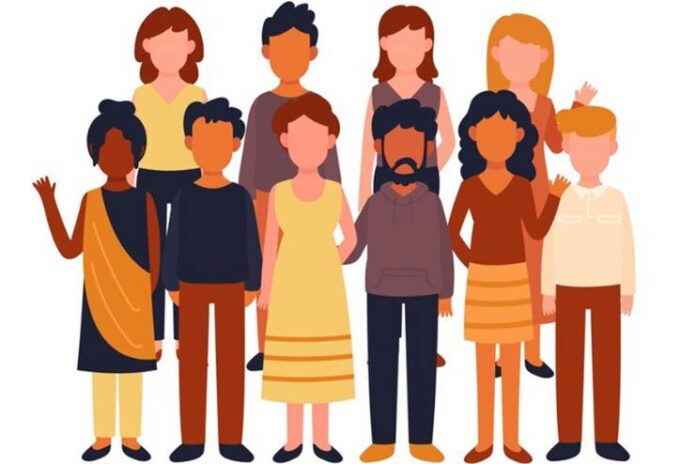AI Contribution
At HealthSpectra, we may use AI to refine grammar and structure, but every piece is shaped, checked, and approved by real people, our expert writers and editors, to ensure clarity, credibility, and care. Learn more..Affiliate Disclaimer
Some links in this article are affiliate links. We may earn a small commission if you make a purchase through these links, at no extra cost to you. We only recommend products we find useful to our readersDiabetes affects millions of people. However, it does not affect everyone the same way. Race and ethnicity may contribute to the development of the disease. Some ethnic and racial groups have a higher susceptibility to diabetes and diabetes complications. This can be either genetic, lifestyle or a social condition.
A proper understanding of these differences could give a basis for improvement in prevention and treatment approaches. This article will focus on the influence of race and ethnicity on diabetes risk and its outcomes.
Diabetes Prevalence by Race/Ethnicity

Diabetes has effects based on race and ethnicity. A few ethnic groups develop diabetes significantly more often than others do. For instance, African American, Hispanic American, and Native American individuals tend to have significantly higher prevalence rates than White Americans do.
There are variations in the prevalence of diabetes among Asian Americans. South Asians have very high rates while those of Chinese origin have relatively low rates.
It could be linked to genetics, lifestyle, and environmental factors, etc. Socioeconomic status also plays a role.
Understanding these trends helps in devising prevention and treatment measures that are effective for the particular subgroup. Reducing disparities is the pathway to health benefits for all.
Genetic Factors Influencing Diabetes Risk

There is a genetic association with the risk of diabetes. There are certain genes that predispose an individual to the development of diabetes. These genes affect how a person’s body uses insulin and how it handles the blood sugar.
For instance, some variants in some genes have been associated with type 1 as well as type 2 diabetes.
In the above-mentioned racial groups, individuals may carry different markers of genetic susceptibility. This makes diabetes vary in rate among the various races. Different groups have a higher genetic risk than others. For example, some races may have a higher risk of insulin resistance.
Social Determinants of Health and Their Impact on Diabetes

Factors such as economic stability, education, and access to healthcare play a critical role in how a person can maintain his or her lifestyle, and increase their competence in dealing with chronic diseases such as diabetes mellitus.
For instance, the impact of food insecurity that is experienced in lower-class communities has severe impacts on achieving better diets for the prevention and management of type 2 diabetes.
Moreover, the unavailability of accessible health care has been contributing to delayed diagnosis and treatment, ultimately worsening outcomes.
Education and living conditions have been greatly increasing diabetes risk. Lower levels of education have been associated with lower health literacy as it diminishes the ability to make a patient understand information on management or access resources for healthier living.
It’s also a matter of neighborhood conditions, as the limited availability of parks and recreational facilities limits opportunities for physical activity. Attention by mainstream initiatives to these social determinants can therefore reduce health disparities.
Health Disparities in Diabetes Complications by Race/Ethnicity

Certain racial and ethnic groups have greater chances of developing severe complications. African Americans and Hispanics, for instance, encounter more diabetic conditions that lead to complications than Caucasians. Such complications include diseases that affect the kidney and vision as well as nerve damage.
These differences have been attributed to a number of various causes. Such a cause is access to healthcare among others. Other communities have fewer resources for healthcare. This limits early diagnosis and effective treatment.
Cultural factors also contribute to this. People of certain tribes may eat certain diets that expose them to becoming diabetic. They may not have knowledge of how they should regulate the disease.
Others may experience language barriers that make it challenging for them to articulate themselves regarding what they need or want the providers to know.
Another is socioeconomic status. Patients with low incomes may not be able to afford their medicines or healthy foods. This would lead to worse health outcomes in the long run.
It’s important to address disparities and we can begin this by increasing access to care. Another way is to ensure education on managing diabetes.
Understanding this will allow us to take better action for everyone, regardless of color and ethnicity.
Conclusion
Diabetes affects people differently depending on their race and ethnicity. Some groups of races face more risks of diabetes and its complications than other race groups. In terms of racial differences, some groups, such as Hispanic Americans, are at greater risk of developing certain complications of diabetes. Factors like genetics, social conditions, and lifestyle play a large role.
Understanding diabetes from an ethnic and racial perspective is important and allows prevention and treatment interventions to be developed differently in order to reach certain groups of people.
References
- https://www.webmd.com/diabetes/type-two-diabetes-race
- https://www.ncbi.nlm.nih.gov/pmc/articles/PMC3830901/
- https://www.ncbi.nlm.nih.gov/pmc/articles/PMC7181870/
- https://diabetesjournals.org/clinical/article/38/4/403/35412/Good-to-Know-Race-and-Type-2-Diabetes
- https://jamanetwork.com/journals/jama/fullarticle/2757817
- https://journals.lww.com/greenjournal/fulltext/2023/10000/racial_and_ethnic_inequities_in_development_of.20.aspx
- https://www.tandfonline.com/doi/full/10.1080/13557858.2012.654765
In this Article





















